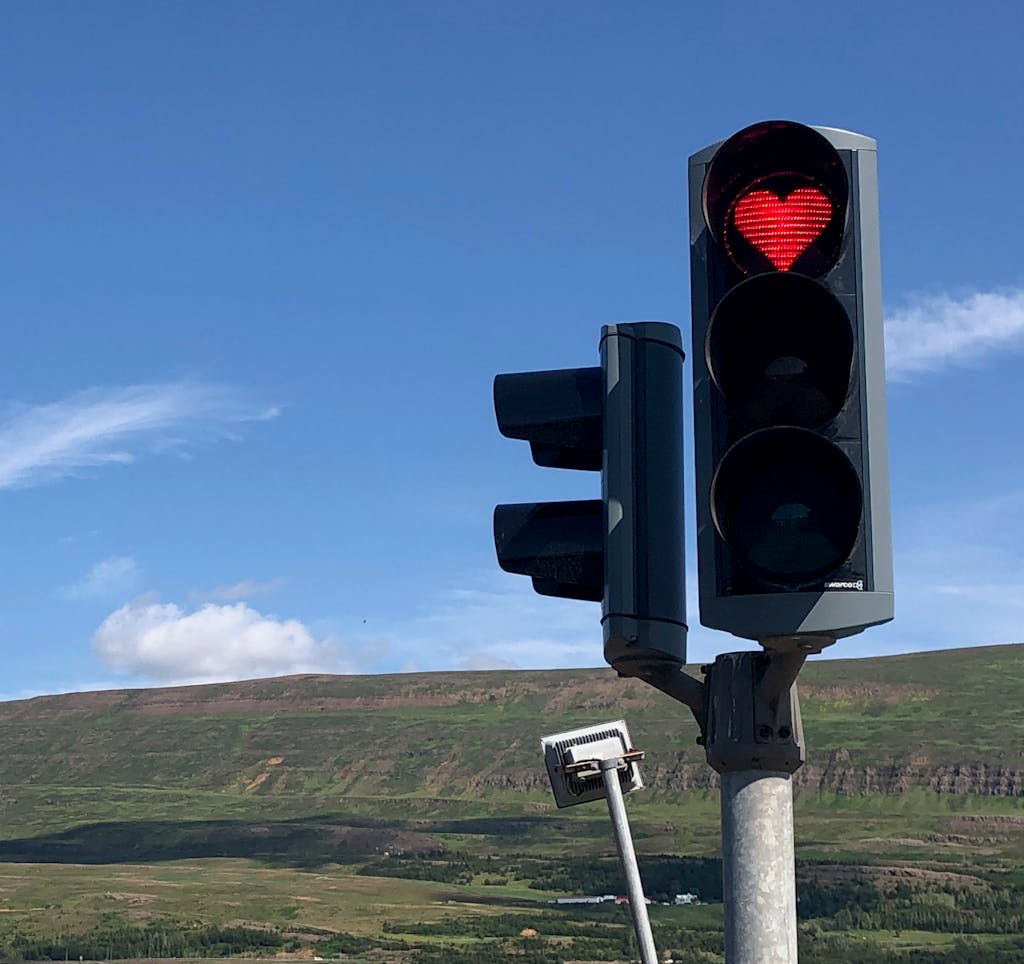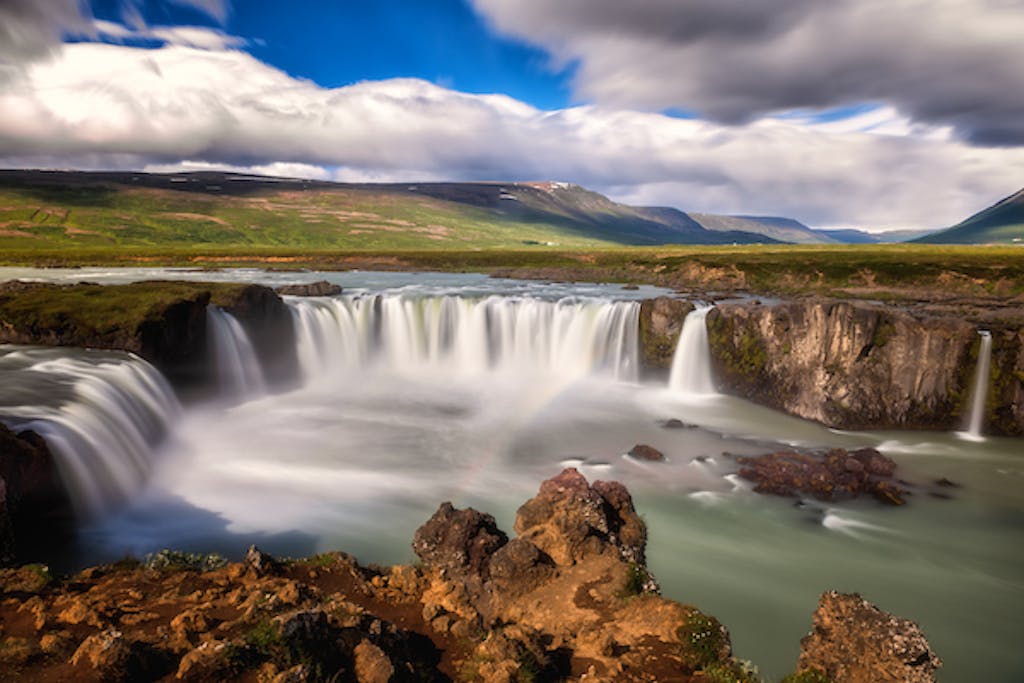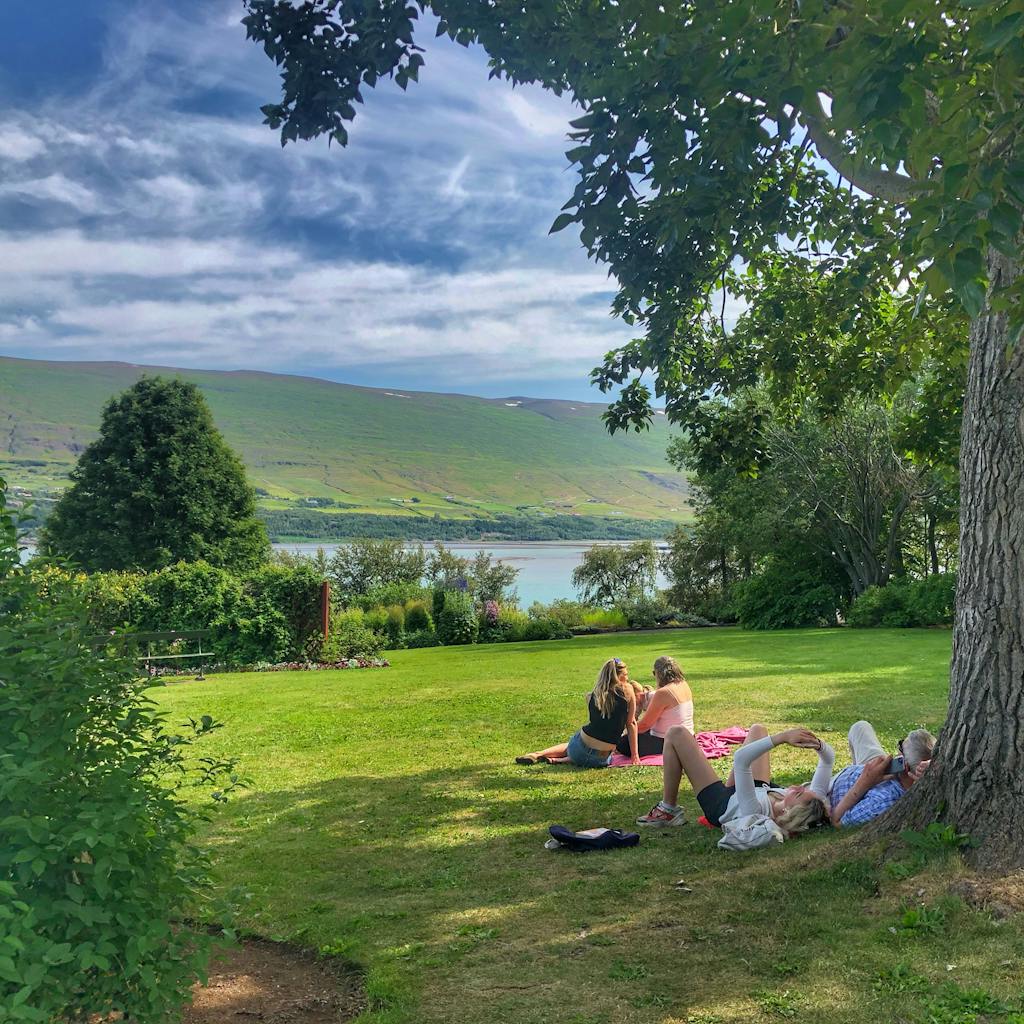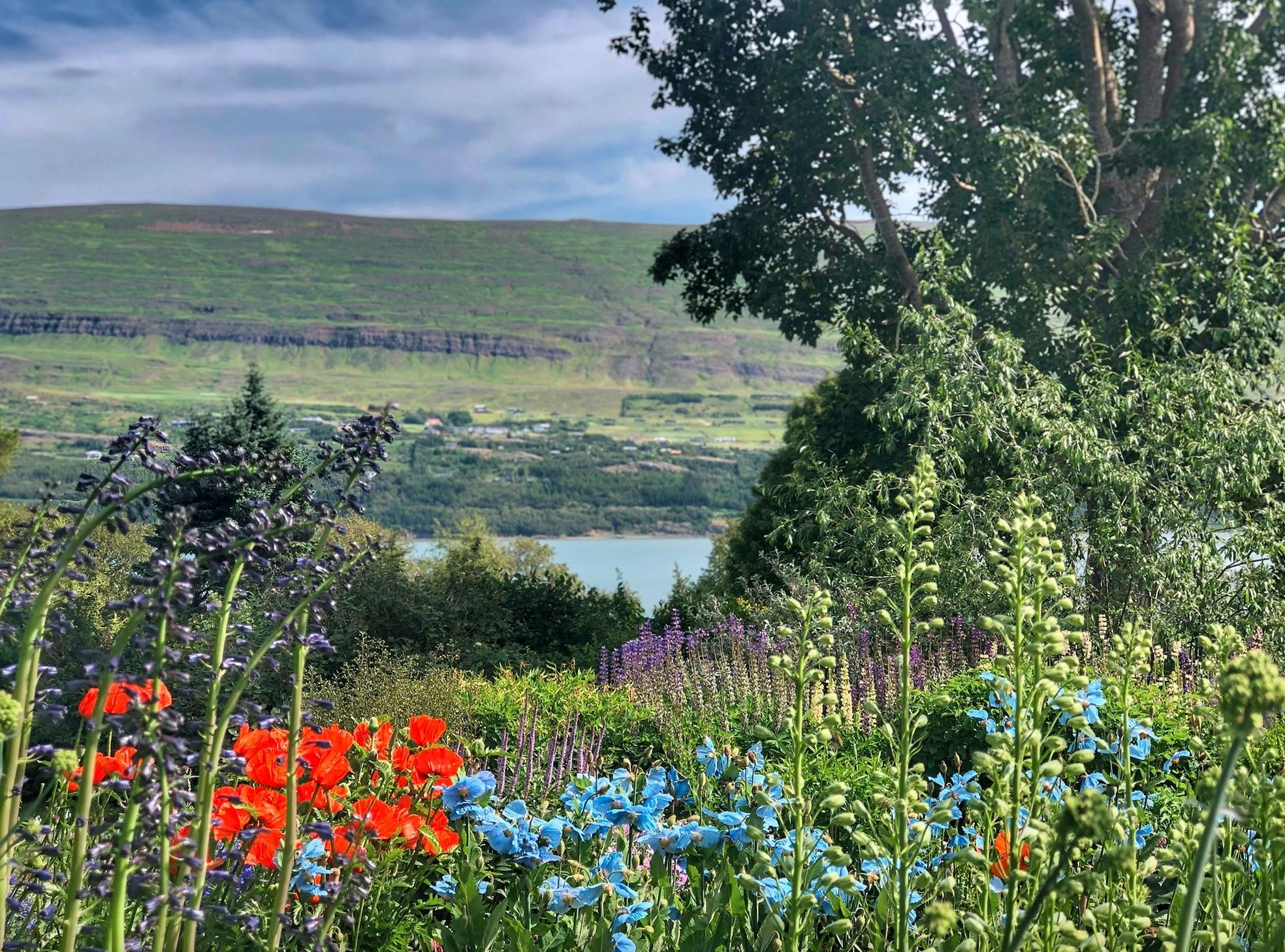Visit Iceland for an Akureyri (Northern Coast) Adventure
From the gray-blue expanse of the Arctic Ocean, the north coast of Iceland appears as a wall of triangular toothed mountains, snow-capped for more than half the year. Approaching closer, the shoreline reveals long pebbled beaches between the clear cold water and endless verdant slopes that turn even greener in summer.
When you visit Iceland between June and September, the hills are dotted with hundreds of white sheep that roam freely over the unfenced landscape. From autumn to spring, plumes of white mist whirl between the massive basalt bluffs left naked since the last ice age. The wet clouds hover over Iceland’s great and silent north like an unspoken mystery for those of us útlanders (foreigners) who visit from more populated parts of the globe.
Here on Iceland’s north coast, Akureyri — a onetime fishing village and now a magnet for art and Nordic culture — was first mentioned in print some 500 years ago. With less than 20,000 residents, Akureyri is used to living in the humble shadows of the older and much-larger capital Reykjavik. Yet Akureyri’s seaside charm and proud personality makes it a far greater destination than its usual classification as Iceland’s “other” city.
What makes Akureyri so special?
For me, it’s the spirit of art and aesthetic that permeates every building. And it’s the attitude of the city itself. Architecturally, Akureyri is both adorable and robust; traditional wood versus the sleek and contemporary glass you find in Reykjavik. There are whole rows of art nouveau facades that date back to the time when this was an active port in the Danish Empire. The prim black cabin is Nonnahús, built in 1850, and once the home of the beloved Icelandic children’s author, Jón Sveinsson.

At every crosswalk, I notice the heart-shaped glow of the traffic lights, changing every red light into a symbol of love. The heart-shaped stoplights are an art installation of their own, dating back to the economic crash of 2007, when the town picked the red heart as a symbol of resilience in the face of hardship. Now the effect is part of the cityscape, dotted with glowing red hearts that hint over and over again that I am not in Reykjavik, but in Akureyri.
Locals love to brag that Akureyri boasts more blue-sky days and sunshine than foggy Reykjavik, and in a country where good weather matters, one can’t help but feel upbeat on the sunny streets that glow pastel in the later summer light.
A stone’s throw from the dock, a stairway leads up a sharp hill that towers with the twin steeples of a modernist cathedral that is home to some tremendous stained-glass windows. And just a block away is the Akureyri Art Museum, the second-largest museum in Iceland and the primary reason I keep returning to this city of the north.
Understated and austere, the Akureyri Art Museum is home to one of the world’s largest collections of work by the Icelandic painter Louisa Matthíasdóttir. With broad brushstrokes in bold color, Matthíasdóttir paints a story of Icelandic resilience and unexpected contrast. Called a landscape painter by some, “avant-garde” by others, her career spanned six decades during which she made waves from New York to Paris. Seeing her paintings reveals the same paintbox I’ve seen in person in Akureyri — remembered on its sunniest days with shiny red roofs and a bright blue sea, the emerald fields beyond and the ever-inquisitive sheep.
That the art on the walls resembles the nature outside is another reason to love Akureyri. Just a few minutes’ drive and “town” disappears, the road leading higher into a region of the country known for its gentle horses, deafening waterfalls and nature unbounded. As I’ve returned again and again to northern Iceland, I’ve found that Akureyri is a terrific base from which to visit the volcanic canyon of Jökulsárgljúfur National Park. Standing at the edge of Dettifoss is simply staggering — the most powerful waterfall in Europe. At full flow, the gray-green water propels outward, consuming the air around it, shaking the ground and making me feel like a single ant among all the other ant visitors clinging to the edge of the cliff.
You’ll want to get out of town, too

It’s the sheer scale of nature in northern Iceland that sets it apart. The flowing waterfall is in fact, the meltwater of the country’s largest glacier, Vatnajökull. Follow the river to the sea and you enter the glistening bay of Husavik, where you might spot a humpback whale (I’ve even seen blue whales in summer). The seasonal changes are part of the grandeur, especially around the clear crater lake of Myvatn, returning inland. Surrounded by a lava landscape that is jagged in places, and almost liquid glass in others, the primordial scenery was the famed film location for several episodes of Game of Thrones. In real life, the freshwater ecosystem is home to hundreds of thousands of migratory birds, including strange and colorful ducks that bask in the safety and warmth of the active geothermal area.
I never visit without dipping into the milky-blue Myvatn Nature Baths, a favorite place to soak away half a day in the therapeutic water. This is the gift of Iceland — that even when the weather turns, one stays warm and comfortable. Even back in Akureyri, I often go swimming in the city’s huge outdoor swimming pool complex, with lap pools, waterslides, steam baths and half a dozen hot tubs, all outside in the open air. This is where people meet and chat, new friendships emerge and where I learn, again and again, that almost everyone in Akureyri is some kind of artist. Whether they sing, play in a band, knit, carve wood or paint — the people of Akureyri use their indoor time creatively, and it shows.

Ready to visit Iceland and experience Akureyri and Nordic culture yourself? Start by browsing Silversea’s Northern Europe & British Isles Cruises.
